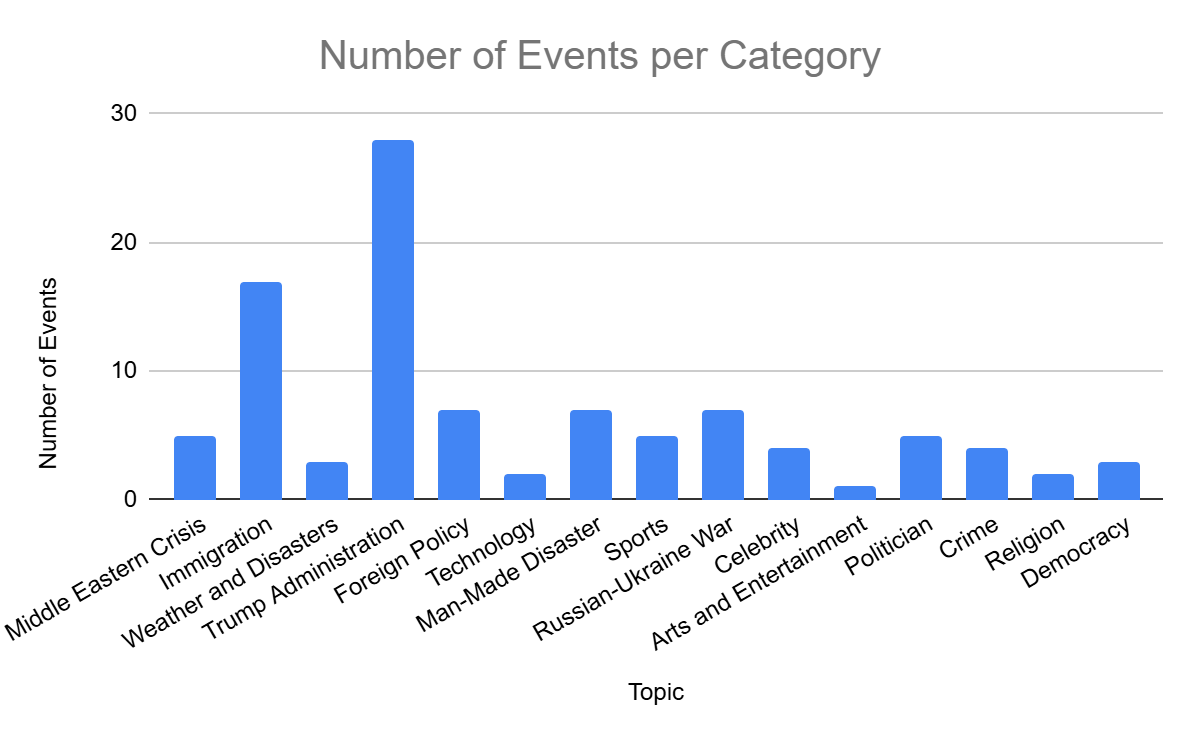What the Media Bias Detector is telling us going into the upcoming Trump v. Harris debate (and what it will tell us coming out of it)
By David M. Rothschild
If you are reading this blog post on the news ecosystem, you are not the typical American when it comes to news consumption. The average American consumes only 0 to 1 news article online per month, and less than half of the population watches more than 30 minutes of "hard news" in a month, spanning broadcast, cable, and Spanish/other news. This might sound surprising, but many Americans are relatively uninformed about key events, including the 2024 election and Kamala Harris’s late entry into the race. For a more detailed understanding of news consumption patterns, feel free to explore our dashboard, which draws on research from papers such as Evaluating the Fake News Problem at the Scale of the Information Ecosystem and Quantifying Partisan News Diets in Web and TV Audiences.
However, this lack of engagement doesn’t necessarily translate to large numbers of swing voters, as most individuals will likely vote for the party they’ve historically supported. I avoided using the term "party identification" intentionally, as Gallup polling indicates a significant rise in people identifying as independents. Nevertheless, voting patterns remain consistent across election cycles (i.e., people not affiliating with a party does not translate into people being more independent). That said, there are still undecided voters—those wavering on whom to vote for, and more critically, those unsure whether they will vote at all. Interestingly, the latter group, while certain about who they’d support if they vote, tends to be even less informed than the average American.
Early voting is rapidly approaching, placing considerable focus on the upcoming debate on Tuesday, September 10. This event is one of the last significant opportunities to introduce new information into the public discourse before the election. With the fallout from the summer debate leading to Joe Biden's exit from the race and Kamala Harris still relatively unknown to the broader public, there is a strong possibility that this debate could attract a wide audience, including those who are generally less informed. Critically, even for those who don’t watch the debate directly, its key narratives are likely to permeate the broader media landscape. It is the last major point to reach those uninformed potential voters.
As polls suggest, this election is shaping up to be quite close. Because many undecided voters, who could sway the outcome, possess relatively low levels of political information, tonight’s debate is one of the few events that will reach those potential voters, even if they are trying to tune it out.
Our Media Bias Detector has observed that leading up to this debate, corporate media has focused much more on defining Harris than on covering Donald Trump. This is expected, given Trump’s established public presence as a former president, while Harris, as the current vice president, remains less familiar to many. Yet, it's worth noting that Trump’s policies and political positioning have shifted since 2020, particularly in light of his involvement with the January 6 insurrection and his evolving stance on democracy. At 78, his age may also factor into coverage (especially as media outlets tend to emphasize this aspect for Biden). Finally, media coverage of Harris still tends to prioritize the "horse-race" elements over substantive discussions of her policies, that she would prefer.
Trump, for his part, has yet to settle on a coherent narrative regarding Harris, but he will likely seize this debate as a unique opportunity to shape public perception. In this context, both candidates face a critical moment to define their platforms and set the tone for the remainder of the campaign.
We will be closely monitoring the media narratives that emerge from this debate using the Media Bias Detector. Our events page is transitioning from tracking a three-day trailing average of the top 10 homepage articles to a one-day trailing average of the top 20 homepage articles. This change will allow us to capture real-time insights into the debate’s coverage, highlighting key topics and facts. Will the narrative be immediately clear during the debate, take shape in the hours following, or will it quickly fade? Stay tuned to the Media Bias Detector to find out!



